Jun 16, 2025
Author:Amanda Lyu
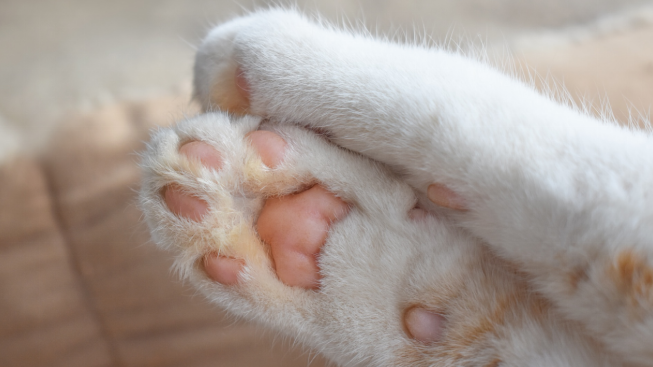
Cats walk on cushions that look like tiny jelly candies. Those cushions have a fun name: toe beans. In this guide, you will learn why these pads matter, how they develop, what they tell you about a cat’s health, and how to care for them through every life stage. It also links you to deeper resources on cat health, grooming, feeding, and behavior.
'Toe bean' is a friendly nickname for the digital pads on each feline paw. Every front paw holds five, and most back paws hold four. The pads cover bone ends, fat, skin, and tough keratin. A thin layer of pigment gives each pad its color. While the term sounds cute, the pads serve serious work:
● They cushion each step.
● They help cats land after a jump.
● They house many nerve endings that sense ground texture.
● They give traction when a cat sprints or changes direction.
Because toe beans sit on the front line of movement, small injuries can change how a cat walks, jumps, or grooms.
The outer layer of each pad is thicker than the skin on the rest of the body. It holds stacked keratin cells that resist rough ground. Under that layer, loose connective tissue absorbs shock. Tiny sweat glands keep the surface moist, improving grip on slick floors.
Each pad contains dense clusters of nerves. They report messages to the brain about surface heat, cold, and shape. A branch of the radial artery feeds the front pads; the femoral artery feeds the back pads. When you press the pad lightly, it should spring back at once. Slow rebound can signal poor blood flow.
The pad works with the claw. When a cat grips, the flexor tendon extends the claw and presses the pad down. If claws grow too long, they curve and dig into the pad. That causes pain with every step. Trim claws often so the pad stays clear.
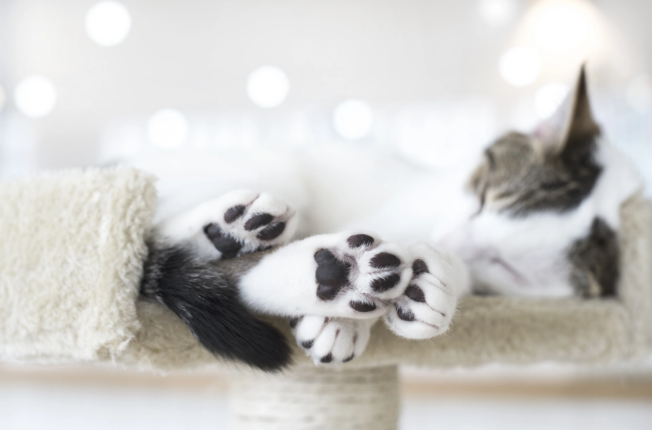
Pad color often matches fur color, though not always. Black coated breeds may show inky pads, while orange cats can flash pink. Some mixed coats carry marbled pads with spots of pink and dark gray. Texture also differs:
● Smooth pads appear in indoor cats that walk on soft floors.
● Rough pads show in outdoor cats that tread on concrete and tree bark.
● Flaky pads can point to dry air or a poor diet.
If you want to learn how coat genetics link to pad shades, visit this guide on black coated breeds.
Kittens are born with soft, pale pads. In the first weeks:
1. Pads darken as melanin settles.
2. The fat layer thickens, giving the rounded 'bean' look.
3. Nerve endings mature, guiding the wobbly walk.
Respect those early pads. Rough carpets or hot surfaces can burn them. For a full chart on kitten diet that supports pad growth, see the kitten feeding schedule.
Jumping down from cabinets would hurt if a cat landed on a bone alone. The pad spreads force over a wider area, sparing joints.
A cat launches into a full sprint in half a second. The textured surface grips smooth tile, letting the back legs push hard without sliding.
Pads sweat. Drops evaporate and cool the body. That cooling is small yet vital, since cats do not pant like dogs.
Pheromone glands in the pad leave scent marks when a cat kneads your lap or scratches a post. Those marks claim space and comfort the cat.
When a cat presses its paws into a blanket, watch the pads. Slow kneads with relaxed claws mean calm. Fast kneading with tension can mean stress or pain.
Healthy pads stay intact during a scratch session. If you see tears or blood on the post, pads may be too soft, or nails too long. Review claw care.
Cats lick their pads to remove dirt. Excess licking can signal an embedded thorn, a splinter, or an allergic itch.
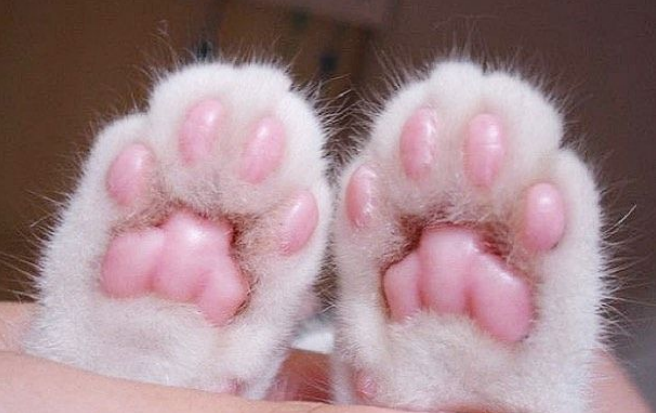
Pick a quiet time. Hold the paw and press the pad gently. Look for:
● Cuts or cracks
● Swelling
● Color change
● Discharge
Use a damp cloth, not wipes with alcohol. For stuck litter, soak the paw in lukewarm water for one minute, then wipe. To keep litter issues low, read about inappropriate litter habits.
Indoor heat can dry pads. A vet-approved lanolin balm will restore softness. Do not use human lotion; it can attract licking and upset the stomach.
Hold the paw. Press the pad so the nail extends. Clip only the clear tip. Avoid the pink quick. Clippers with LED guides can help reduce errors. A timed reminder on an automatic feeder routine can cue you each month.
|
Season |
Main Risk |
Pad Impact |
Prevention |
|
Winter |
Ice melt salt |
Cracks, burns |
Rinse paws after walks |
|
Summer |
Hot asphalt |
Blisters |
Test ground with your hand; walk at dawn |
|
Spring |
Lawn chemicals |
Dermatitis |
Wipe pads after yard time |
|
Fall |
Dry air |
Flaking |
Use a humidifier indoors |
When you plan car travel, pack booties if pavement may scorch paws at rest stops.
Sharp glass or thorns can lodge in the pad. Clean with saline, apply pressure to stop bleeding, then see a vet if the cut is deep.
Hot stoves and candles cause contact burns. Pads turn red or peel. Cool under tap water and seek care.
Extreme cold turns pads pale, then dark blue. Warm slowly with blankets, not hot water.
Swollen 'pillow foot' comes from immune trouble. Pads grow puffy, and the cat limps. A vet may give antibiotics or steroids.
Pads thicken into hard crusts. Seniors and some breeds face a higher risk. Trim dead layers under vet guidance.
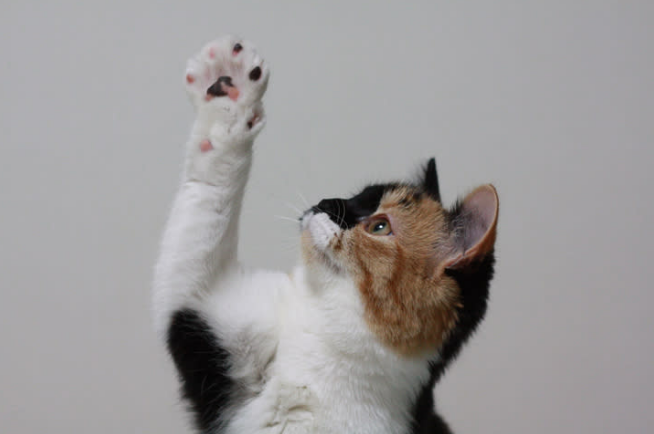
A pad issue rarely stands alone. Often it ties to deeper habits:
● Dry, cracked pads can stem from low water intake. Review hydration hacks.
● Obese cats place more force on pads; consider a switch to automatic portion control.
● Hormone shifts after spaying or neutering can change skin oils, including on pads.
When you track these factors early, you keep toe beans healthy for life.
● Soft brush – removes debris between pads.
● Pet-safe wipes – clean after outdoor play.
● LED nail clippers – safe trimming.
● Paw balm – treats dry skin.
● Non-slip mats – improve footing near water bowls.
A slicker brush pulls loose fur from legs and pads before it mats. If fur sticks to your clothes, check these steps for removing loose fur.
Omega-3 fats strengthen skin layers. Taurine supports circulation. High-quality wet food supplies both. If your schedule keeps you away, learn how to feed wet food while away using a sealed dispenser.
Water also matters. Cats prefer moving water because it feels fresh. A study shows many cats drink 40% more from fountains than from bowls. Compare options in this guide on the fountain versus the bowl. You can pair a fountain with an app-linked camera feeder so you can monitor hydration when you travel.
Pads can signal stress through sweat. After a vet visit, you may see damp prints on the exam table. Constant stress has bigger effects:
● Excess kneading can thicken pads.
● Repetitive paw licking can cause sores.
● Hiding can reduce movement, leading to pad calluses.
Reduce stress by offering climbing shelves, regular play, and proper feeding times. Daily routines like the wellness habits list help as well.
Older cats walk less, so pads harden and may crack. Massage with warm cloths once a day. Offer heated beds so blood flow improves.
Extra weight presses pads flatter. Encourage slow weight loss with puzzle toys and measured meals.
Wide bowls can spare whiskers but may let water drip on pads. Read tips to avoid whisker fatigue and choose mats that stay dry.
The health of a cat travels from head to paw with every step. By understanding the structure, function, and care of toe beans, you keep your companion safe and agile. Check pads each week, trim nails on schedule, feed balanced food, and watch hydration. Pair these habits with smart gear like fountains and timed feeders, and you build a solid path toward lifelong paw comfort.
In the end, caring for toe beans is not just about a cute nickname. It is about respecting the structures that let a cat leap, climb, and explore with grace. Keep the pads strong, and you keep the whole body ready for action.
Label:
Popular Post
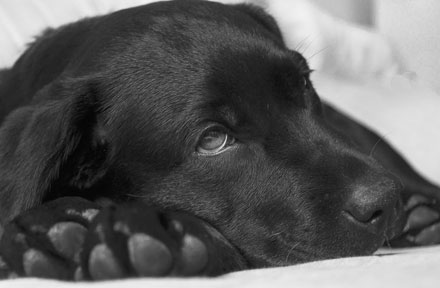
What to Feed a Sick Dog With No Appetite? [2025 Guide]
May 16, 2023
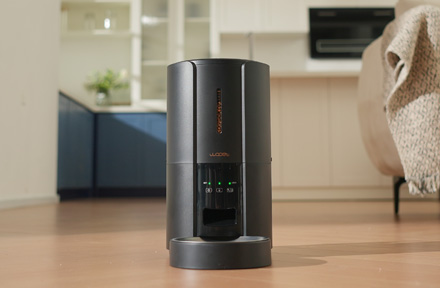
Troubleshooting Common Issues with Automatic Pet Feeders: Tips & Tricks for Pet Owners
Oct 26, 2023
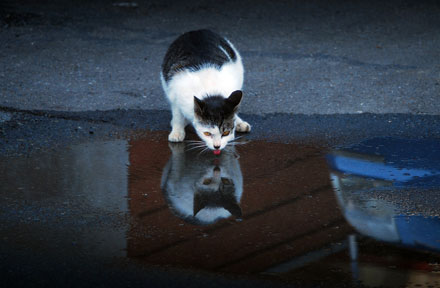
Why Does My Cat Cough After Drinking Water? 8 Potential Reasons
Mar 13, 2023
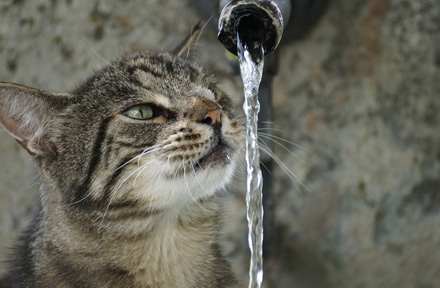
Why is My Cat Throwing up Water? Top 5 Causes Here
Feb 08, 2023
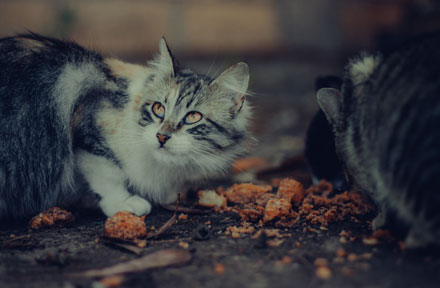
My Cat Only Eats A Little at A Time - What to Do?
Feb 27, 2023
$99.99
$129.99
Copyright © 2025 WOPET. All Rights Reserved.